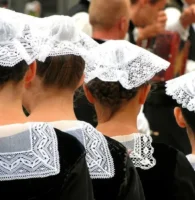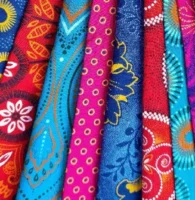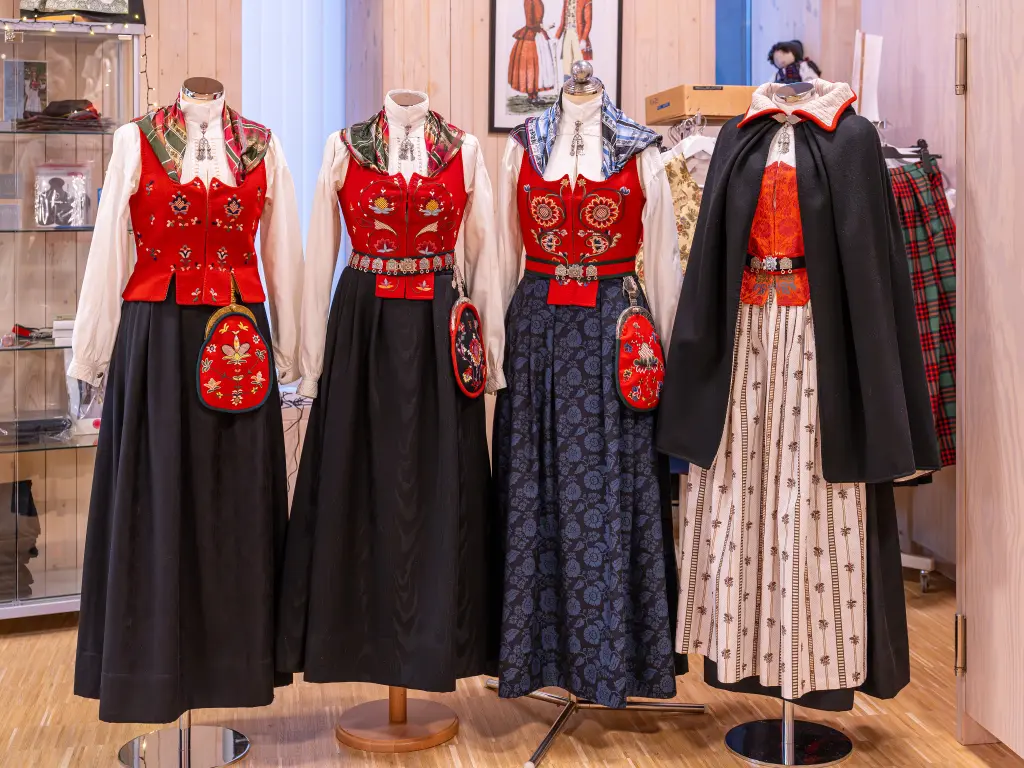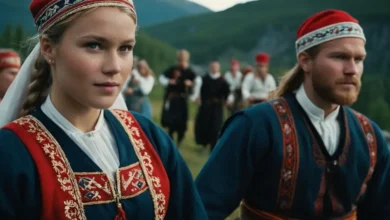Hey there, friend. Picture this: a vibrant parade on a crisp May morning, where folks of all ages step out in outfits that burst with color, history, and heart. That’s the bunad in action—a Norwegian folk costume that’s equal parts celebration and connection.
If you’ve ever marveled at its intricate embroidery or wondered why it feels like a hug from the fjords, you’re in good company. In this piece, we’ll wander through its story, unpack its designs, and see how it’s striding into 2025 with fresh energy. Whether you’re tracing your roots, planning a trip to Norway, or just love a good cultural deep dive, come along. You’ll leave feeling inspired to honor your own traditions, big or small.
Clothing like the bunad does more than cover us—it roots us. It’s a reminder that style can spark pride, preserve stories, and unite us across generations. Let’s thread our way in.
The Roots of the Bunad: From Folk Roots to National Treasure
Imagine 19th-century Norway, shaking off centuries of unions with Denmark and Sweden. Amid this push for independence, folks turned to their rural past for symbols of unity and strength. The bunad—Norway’s cherished folk costume—sprang from everyday rural garb of the 1700s and 1800s, revived as a badge of national identity. It wasn’t some dusty relic; it was a bold reclaiming of Norwegian spirit.
See also The Delicate Crowns of Coiffes Bretonnes: Brittany’s Lace Legacy of Pride and Craft
The Delicate Crowns of Coiffes Bretonnes: Brittany’s Lace Legacy of Pride and Craft
Pioneers like Hulda Garborg, a fiery writer and activist, lit the spark. In 1903, her pamphlet Norsk Klædebunad shifted focus from one “national dress” to regional ones, drawing from local embroidery, woodcarvings, and rose-painting traditions. Garborg traveled the land, preaching cultural pride while rocking her own tweaked Hallingdal version—proof that heritage evolves. By Norway’s 1905 independence, the bunad was a hit, worn to signal “this is us.”
A Quick Timeline of the Bunad‘s Journey
To keep it snappy, here’s how this tradition unfolded:
| Year | Milestone |
|---|---|
| 1840s | Romantic nationalism revives interest in peasant culture; folk costumes reemerge as “national dress.” |
| 1903 | Hulda Garborg’s pamphlet pushes for regional bunads over a single style. |
| 1920s | Post-WWII local identity boom; over 200 regional designs take shape. |
| 1947 | Norwegian Institute for Bunad and Folk Costume founded to document and guide traditions. |
| 2023 | UNESCO adds bunad to Intangible Cultural Heritage list for its living role in Norwegian life. |
This revival wasn’t just pretty clothes—it was resistance. As industrial black suits spread, the bunad kept rural colors alive. Academics like those in Norsk Bunadleksikon (2006) note how it bridged old farming ways with modern nation-building. From an Indigenous Sámi view—Norway’s first peoples—the bunad contrasts with their gákti, but both honor land ties. A Sámi elder in a recent forum shared: “We wear our own for pride, but respect the Norwegian’s too—it’s all about roots in this cold north.”
Cool twist: Some designs nod to medieval times, like Setesdal’s unbroken line from the 1300s.
See also The Vibrant Soul of Shweshwe Fabric: South Africa’s Printed Legacy of Pride and Pattern
The Vibrant Soul of Shweshwe Fabric: South Africa’s Printed Legacy of Pride and Pattern

Unpacking the Design: What Makes a Bunad Sing?
At first glance, a bunad dazzles with reds, blues, and golds. Dig deeper, and every stitch whispers regional tales. Over 450 varieties exist, each tied to a place—think Telemark’s fiery reds or Nordland’s cool blues. It’s not random; it’s rooted in local wool, silverwork, and folklore motifs like roses or geometric weaves.
Key Elements That Define the Bunad
- Skirt and Bodice: Wool or silk skirts hit mid-calf; bodices hug with embroidered bands. Unmarried women often go sleeveless; married add shawls or belts for status.
- Embroidery Magic: Hardanger’s white-on-black counts stitches like lace; Østfold pulls from farm cupboards’ rosmaling.
- Silver Sølje: Brooches, buttons, and clasps—gilded filigree that dangles softly. They secure shirts and signal heritage; no plastic fakes allowed.
- Headwear and Aprons: Wreaths or scarves for women; caps for men. Aprons (front black, back white) denote marital status—practical poetry.
- Men’s Counterparts: Breeches or pants in wool, vests with silver trim, and knit sweaters like Setesdal’s lusekofte.
Fabrics? Wool for durability, silk for shine—sourced locally where possible. A 2024 study in Fashion & Textile Studies hails its ergonomics: breathable for fjord hikes, adaptable across seasons. Sámi perspectives highlight parallels: “Our gákti uses reindeer hide; theirs wool—but both weave the land’s story,” notes a community voice.
Quick hack: Match your bunad to your roots—genetic or residential—for that authentic glow.
Cultural Heartbeat: The Bunad as Norway’s Pride Pulse
The bunad isn’t just attire; it’s a cultural compass. Worn at confirmations, weddings, and 17th of May parades, it levels the field—farmers and city slickers alike shine in equality. With 2.5 million in Norwegian homes, it’s a quiet revolution of belonging.
Layers of Meaning in Every Fold
- Regional Roots: Over 450 designs map Norway’s diversity—Hallingdal’s bold geometrics for mountain folk, Finnmark’s nods to Sámi influences.
- Inclusivity Edge: Immigrants craft “festdrakter”—personal twists blending heritages, like Gambian-Norwegian silks with Nordic weaves.
- Protest Power: From independence rallies to modern health marches, bunads armor activists—think “bunad guerillas” fighting for welfare.
Sámi views add depth: While distinct from gákti, the bunad fosters dialogue. “It shows Norwegians value place, like we do,” shares a forum contributor. In Heritage and Museums (2000), experts call it a “unifier in diversity.” Yet, debates simmer: Strict “bunad police” vs. creative adapters. Balance wins—honor the past, embrace the now.
Bunad on the Global Stage: From Parades to Pop Icons
The bunad steals scenes far beyond Norway. On 17th of May, Oslo’s streets bloom with them; abroad, they flag diaspora pride. Celebs amplify the vibe: Model Amanda Hearst stunned in a Vestfold bunad for her Norwegian wedding, calling it “a story in silk.” Queen Sonja’s sparked chats (sunglasses? Nah), while Crown Princess Mette-Marit owns multiples, blending regions like a pro.
Spotlight Steals and Screen Magic
- Royal Flair: King Harald and Queen Sonja don bunads for Storting openings—formalwear with fjord soul.
- Star Power: Rikke Krefting channels Hallingdal chic on runways; Hulda Garborg’s legacy lives in every embroidered edge.
- Diaspora Glow: U.S. Norwegian-Americans rock emigrant versions with Viking ships—bridging oceans.
- Modern Mixes: Festdrakter pop in films, fusing bunad with global threads for inclusive tales.
From Epcot parades to TED Talks, it empowers: Wear your story, inspire the world.
For more on Nordic icons, peek our Sámi gákti guide or 17th of May traditions.
2025 Vibes: The Bunad Goes Green and Global
Fast-forward to 2025: The bunad isn’t stuck in 1905—it’s remixing with sustainability and inclusivity. Queer exhibitions like “Skakke Folkedrakter” tour till May, queering norms with bold twists. Eco-materials shine: Organic wool, mushroom fabrics, and regenerative dyes cut carbon footprints.
Fresh Evolutions for Today
- Eco-Upgrades: Linen blends and recycled silks for planet-friendly heirlooms—Husfliden leads with low-impact lines.
- Multicultural Mashups: Festdrakter weave African prints into Nordic patterns—affordable entry to the tradition.
- Slimmer Silhouettes: Shorter hems nod to modern fits, but purists push back for historical lengths.
Men’s bunads surge—urban 20-somethings snag vests for weddings. Sámi innovators blend gákti elements, fostering cross-cultural crafts: “It’s unity in diversity,” per a 2024 forum. Fashion Practice (2023) praises this as “wearable activism.”
Your Bunad Playbook: Styling and Etiquette Essentials
Got a bunad or eyeing one? Here’s how to wear it right—respectful, radiant, real. It’s about confidence, not perfection.
Easy Steps to Rock It
- Pick Your Piece: Tie to your heritage—birthplace or ancestry. Rentals start at 500 NOK/day for events.
- Layer Lightly: Crisp white shirt under bodice; shawl for chill. Skip heavy makeup—let embroidery pop.
- Jewelry Rules: Sølje only—brooch on shirt, not skirt. Buckles on shoes; no earrings or sunnies.
- Occasion Fits:
- 17th of May: Full festbunad, braids, parade-ready.
- Wedding: Add heirloom silver; keep it formal.
- Casual Nod: Hverdagsbunad (everyday version) with sneakers for folk dances.
From Oslo locals: “Wear it proud—it’s your thread in the tapestry.” Build slowly; a full set takes years. Ethical tip: Source from certified Norwegian makers.
Dive deeper with our folk costume care tips.
Why the Bunad Endures: Empowerment in Every Wear
From 19th-century fields to 2025 runways, the bunad proves traditions thrive when they adapt. It’s Norway’s love letter to roots—regional, resilient, real. In a throwaway world, it empowers slow choices: heirlooms over hauls, stories over trends.
As Anne Kristin Moe notes, it’s “living history you can touch.” Sámi voices affirm: Shared pride heals divides.
Step Into Your Story: Make the Bunad Yours
Ready to weave in? Visit Husfliden for a custom consult—starts at 20,000 NOK, lasts lifetimes. Snap your first wear on 17th of May; tag a friend to join. Or gift a festdrakt kit—spark joy ethically.
Support Indigenous crafters via NBF-approved artisans. Practical: Rent for immersion. Empowering: Claim your cultural spark.
What’s your heritage thread? Share below—let’s celebrate together. Your story deserves the spotlight. Go stitch it.
